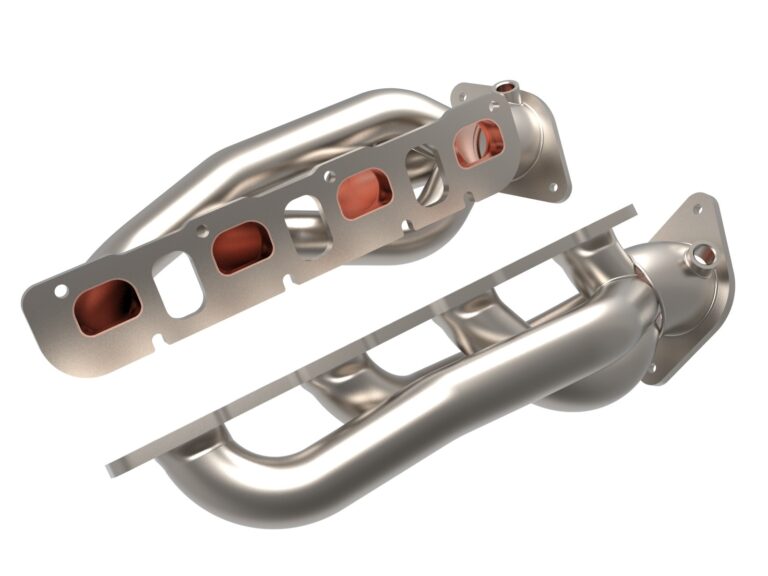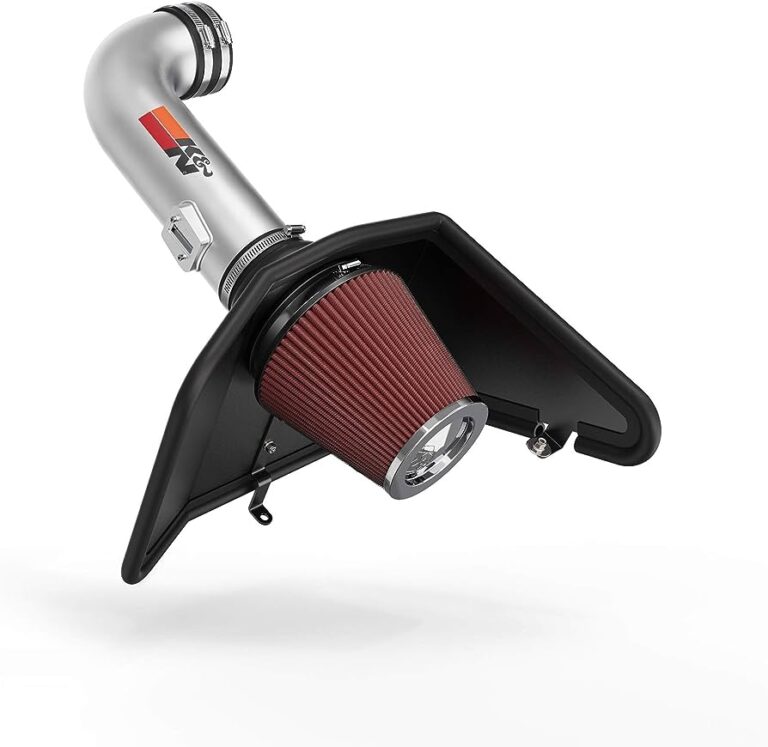What’s a DPF Delete? Unleash the True Power of Your Vehicle!
A DPF delete is the process of removing or bypassing the diesel particulate filter from a vehicle’s exhaust system. It is done to increase performance and fuel efficiency, but it is illegal in many countries due to the increased emissions it causes.
DPF deletes can lead to hefty fines and may void vehicle warranties. A diesel particulate filter (DPF) is a part of a vehicle’s exhaust system that captures and stores exhaust soot to reduce emissions. However, over time, the DPF can become clogged with soot and needs to be cleaned or replaced.
Some vehicle owners choose to perform a DPF delete, which involves physically removing the filter or using a programmer to disable it electronically. This allows for increased exhaust flow, improved fuel economy, and better overall performance. However, it is important to note that DPF deletes are not legal in many countries and may result in fines or penalties for violating emissions regulations. It is always recommended to check local laws and regulations before considering a DPF delete.
Understanding The Dpf (diesel Particulate Filter)
A DPF, or Diesel Particulate Filter, is a crucial component of a diesel engine’s exhaust system. Its primary purpose is to trap and collect harmful particulate matter, such as soot and ash, from the engine’s emissions, thus reducing the amount of pollutants released into the atmosphere. The DPF works by forcing exhaust gases through a porous filter, which captures the particulates while allowing cleaner gases to pass through. Over time, the collected soot and ash build up in the filter, leading to decreased performance and increased back pressure. To prevent these issues, a process known as regeneration is initiated, where the trapped particulates are burned off or converted into less harmful substances. However, despite their environmental benefits, some vehicle owners opt for a DPF delete, which involves removing or disabling the filter altogether. This practice is not only illegal in many countries but also compromises air quality and violates emission regulations.
What Is A Dpf Delete?
What is a DPF Delete?
A DPF delete or Diesel Particulate Filter delete is a process of removing the DPF system from a diesel vehicle. The DPF is an emission control component that captures and stores soot from the exhaust. However, a DPF can lead to decreased engine performance and increased maintenance costs.
Definition and purpose of DPF delete:
The purpose of a DPF delete is to improve the performance and efficiency of a diesel vehicle. By removing the DPF system, the exhaust flow is improved, reducing back pressure and increasing horsepower and torque. This can result in better fuel economy and overall engine performance. Additionally, a DPF delete can prevent costly repairs associated with a clogged or malfunctioning DPF.
Reasons why people choose to delete their DPF:
| Reasons for DPF Delete |
|---|
| Better engine performance and fuel economy |
| Prevention of costly DPF repairs |
| Improvement in exhaust flow |
| Increased horsepower and torque |
| Reduction in maintenance costs |
Benefits Of Dpf Delete
Benefits of DPF Delete:
Dpf Delete refers to the removal or bypassing of the Diesel Particulate Filter (DPF) in a vehicle’s exhaust system. This modification offers several advantages and is favored by many vehicle owners. One notable benefit of DPF Delete is the increased engine performance and power. By eliminating the DPF, the exhaust flow is improved, reducing backpressure and allowing the engine to breathe more efficiently. This results in improved throttle response and overall power.
Another advantage of DPF Delete is the improvement in fuel efficiency. With the removal of the DPF, the exhaust restriction is reduced, enabling the engine to operate more efficiently and deliver better fuel economy. Additionally, by eliminating the regeneration process required by DPF-equipped vehicles, fuel consumption is further improved.
Furthermore, DPF Delete can contribute to extended engine longevity. The DPF system can be prone to clogging and malfunction, which can lead to poor engine performance and potential damage. Removing the DPF eliminates these concerns, allowing the engine to operate at its optimum level and potentially extending its lifespan.

Credit: tmagtuning.com
Legal And Environmental Considerations
The legal and environmental considerations surrounding DPF delete are crucial to understand. When removing the diesel particulate filter (DPF) from a vehicle, it is important to be aware of the regulations and laws in place. Authorities in many countries strictly prohibit tampering with emission control systems, including DPF removal, as it violates air pollution regulations. Engaging in DPF delete can result in hefty fines and even legal consequences. Moreover, it is essential to acknowledge the environmental impact of DPF delete. By removing the DPF, harmful particulate matter and pollutants are released into the atmosphere, contributing to air pollution and negatively affecting public health. Understanding the legal restrictions and environmental consequences of DPF delete is essential for responsible vehicle owners and operators.
Dpf Delete Methods
DPF Delete, also known as Diesel Particulate Filter Delete, is a process that involves removing or bypassing the DPF system from a diesel vehicle. This is usually done to improve performance, increase fuel efficiency, and reduce maintenance costs. There are different methods available for deleting the DPF, each with its pros and cons.
| Method | Pros | Cons |
|---|---|---|
| Software Remap | Increased power and torque, improved fuel economy | Potential warranty void, emissions non-compliance |
| DPF Removal Pipe | Improved exhaust flow, reduced backpressure | Illegal in some regions, emissions non-compliance |
| DPF Delete Kit | Complete removal of DPF system, improved performance | Potential warranty void, emissions non-compliance |
Each method has its own advantages and disadvantages. It is important to consider local laws and regulations, warranty implications, and potential environmental impacts before proceeding with a DPF delete. Consulting with a professional mechanic or tuning specialist is recommended to ensure the best possible outcome for your vehicle.
Potential Risks And Drawbacks
Deleting the diesel particulate filter (DPF) in a vehicle can have potential risks and drawbacks that vehicle owners should be aware of. One of the possible consequences of a DPF delete is the warranty implications. Removing the DPF from a vehicle can void the manufacturer’s warranty, leaving the owner responsible for any repairs or damages.
Another possible consequence is potential legal issues. Many countries have strict regulations regarding emissions and tampering with the DPF can be considered illegal. This can result in fines and penalties for the vehicle owner.
It is important to note that while a DPF delete may offer benefits such as increased performance and fuel efficiency, it is crucial for vehicle owners to weigh these potential risks and drawbacks before considering a DPF delete.
Assessing Your Vehicle’s Needs
Assessing Your Vehicle’s Needs
If you are considering a DPF delete, there are a few factors to consider before making a decision. While DPF delete can offer benefits, it is important to evaluate whether it is the right choice for your vehicle.
Types of vehicles that benefit from DPF delete:
| Vehicle Type | Usage | Consideration |
|---|---|---|
| Commercial trucks | Long-haul routes | Reduced downtime for regeneration |
| Off-road vehicles | Heavy-duty activities | Improved performance and fuel efficiency |
| Recreational vehicles | Frequent short trips | Prevention of DPF clogging |
Before deciding on DPF delete, it is crucial to consider these factors. Assess your vehicle’s usage, whether it falls into the categories mentioned above, and the advantages that a DPF delete can offer. This will help you determine whether a DPF delete is the right choice for your vehicle.
Alternatives To Dpf Delete
Alternative methods to improve engine performance are worth considering if you are looking for alternatives to DPF delete. These alternatives offer various benefits and drawbacks that should be carefully examined. One option is performance tuning, which involves reprogramming the engine control unit (ECU) to optimize performance. This can increase power and torque while improving fuel efficiency. Another option is upgrading the air intake system to allow for better airflow, resulting in increased power and efficiency. Additionally, installing a performance exhaust system can enhance engine performance by reducing backpressure and improving exhaust flow. Other alternatives include using fuel additives that claim to improve combustion efficiency and regularly maintaining the engine and DPF. It is important to carefully evaluate the benefits and drawbacks of each option based on your specific needs and vehicle requirements.
Making An Informed Decision
htmlA DPF delete refers to the removal or disabling of the diesel particulate filter in a vehicle’s exhaust system. This modification is often done to improve performance and fuel efficiency. However, before deciding to undertake a DPF delete, it is essential to weigh the pros and cons involved.
Pros of DPF Delete:
- Increased engine power and torque
- Potential improvement in fuel economy
- Reduction in maintenance costs related to periodic DPF regeneration
Cons of DPF Delete:
- Potential violation of emissions regulations
- Possibility of higher emissions and environmental impact
- Voiding of vehicle warranty
Before making a decision about a DPF delete, it is crucial to consult with experts and professionals who can provide guidance based on your specific vehicle make and model. They can help you understand the potential benefits and risks associated with the modification, as well as the legal implications. Ultimately, an informed decision can be made by weighing the pros and cons and considering your individual needs and circumstances.
Frequently Asked Questions Of Whats A Dpf Delete
What Does Deleting Your Dpf Do?
Deleting your DPF removes the diesel particulate filter, a component that captures harmful emissions. This modification can increase engine performance but may also lead to higher pollution levels. It is crucial to consider legal and environmental consequences before deleting your DPF.
Is A Dpf Delete Illegal?
A DPF delete can be illegal in some countries and regions due to emissions regulations. Always check local laws and regulations before removing a DPF.
Is It Worth Doing A Dpf Delete?
Yes, doing a DPF delete can be worth it for some people. It can increase performance and fuel efficiency in older diesel vehicles. However, it is important to note that removing the DPF is illegal in many countries and can lead to fines or other penalties.
How Much Does Dpf Delete Cost?
The cost of DPF delete varies depending on the vehicle make and model, but it typically ranges from $500 to $2,000. Prices may include parts, labor, and any necessary tuning or modification. It’s best to consult with a trusted mechanic or DPF specialist for an accurate quote.
Conclusion
A DPF delete refers to the process of removing the diesel particulate filter from a vehicle’s exhaust system. While this modification may offer certain benefits such as improved performance and fuel efficiency, it is important to consider the potential legal and environmental implications.
Before opting for a DPF delete, it’s crucial to understand the regulations in your region and consult with professionals in the field. Making an informed decision ensures that you can balance your vehicle’s performance with legal and environmental responsibilities. Choose wisely!







